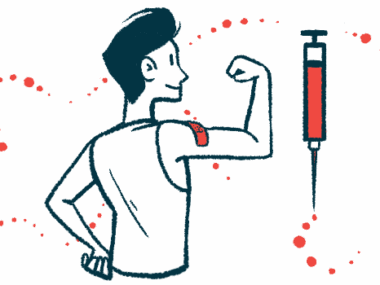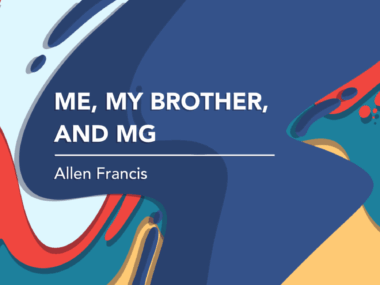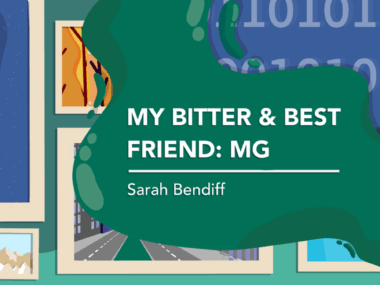I’m troubled by the connection between homelessness and disability
Financial problems are a major concern in the rare disease community
Written by |

The exceptionally hot summer weather in Texas, where I live, has made life for unhoused people more difficult than usual. It’s troubling to see so many people standing outside in the heat at stoplights or camping under overpasses.
Two weeks ago, I broke free from the record high temperatures that have plagued the region. I’m enjoying the tail end of summer sitting by the pool and walking the beaches of New England, where my family lives. But those experiencing homelessness keep coming to mind. I may be comfortable, but I know they’re suffering.
I decided I should examine my discomfort, and what I discovered surprised me. I think others with chronic diseases may appreciate what I learned.
Dire financial straits
Having myasthenia gravis (MG) places me among the 27% of American adults who are disabled. Those in this community live with challenges not often confronted by the nondisabled. Those of us with MG deal with symptoms such as fatigue, dysarthria (slowed or slurred speech), and dysphagia (difficulty swallowing). In addition to physical issues, we face emotional challenges as well as practical concerns, such as financial problems.
Unemployment among the disabled is roughly double that of the nondisabled, according to a 2022 report from the U.S. Bureau of Labor Statistics. Among the people with disabilities who are employed, 30% work part time, limiting their earning power. Combine decreased income with high healthcare costs, and the precarious financial situation experienced by the disabled becomes clear.
A 2009 Disability Scoop article notes:
“In 2008, 42.8 percent of all adults using homeless shelters had a disability compared to 37.1 percent in 2007. … One reason for the high number of homeless people with disabilities may be that people in this population are more likely to be impoverished than those without disabilities, according to [an annual report from the Department of Housing and Urban Development]. Moreover, reliance on relatively small Supplemental Security Income (SSI) payments — which average 44 percent below the federal poverty level — could also make it difficult for people to retain permanent housing.”
The connection between disability and homelessness hits close to home. Since my MG diagnosis in 2020, my financial situation has changed dramatically. My private disability insurance replaces only 70% of my former income. Without this reduced income, I would be in dire financial straits.
In other words, I stand on the precipice of financial collapse. Not much stands between me and homelessness. Without my family, I would topple off this precipice.
The precarious nature of life with a disability is the root of my discomfort. When I see homeless people from the comfort of an air-conditioned car, I recognize that I could easily become one of those standing under the Texas sun.
How can I help them? How should our society help them?
Challenging how our society views homelessness
“The Dirty Divide” is Los Angeles-based filmmaker Paul Freedman’s latest film. According to a recent article published in Commonweal Magazine, “The film aims to disabuse the viewer of the tired belief that the majority of its residents landed on Skid Row through alcoholism or drug abuse, or that the houseless are opportunistic sunseekers mooching on longtime locals.” How are the views Freedman disproves possible in such a prosperous nation? What does this say about our society?
American politician and former Vice President Hubert Humphrey gave us a test by which we can judge our nation: “It was once said that the moral test of government is how that government treats those who are in the dawn of life, the children; those who are in the twilight of life, the elderly; and those who are in the shadows of life, the sick, the needy, and the handicapped.” The unhoused people we see on our streets, those Freedman encounters in “The Dirty Divide,” provide evidence that we have failed this test.
The rare disease community can advocate for solutions to the economic challenges we face. We should remember the words often attributed to American cultural anthropologist Margaret Mead: “Never doubt that a small group of thoughtful, committed citizens can change the world: Indeed, it’s the only thing that ever has.”
For Christians, our faith challenges us to accomplish this task. In Matthew 25:34-35, the Evangelist tells us how our lives will be judged: “Come, ye blessed of my Father, inherit the kingdom prepared for you from the foundation of the world: For I was an hungred, and ye gave me meat: I was thirsty, and ye gave me drink: I was a stranger, and ye took me in.”
Now I know why homelessness has been bothering me. My rare disease community is closely tied to this plight. As one individual featured in “The Dirty Divide” says, “If Christ Jesus was here on this earth in the flesh, he’d be on Skid Row.” Let’s find him a home.
Note: Myasthenia Gravis News is strictly a news and information website about the disease. It does not provide medical advice, diagnosis, or treatment. This content is not intended to be a substitute for professional medical advice, diagnosis, or treatment. Always seek the advice of your physician or other qualified health provider with any questions you may have regarding a medical condition. Never disregard professional medical advice or delay in seeking it because of something you have read on this website. The opinions expressed in this column are not those of Myasthenia Gravis News or its parent company, Bionews, and are intended to spark discussion about issues pertaining to myasthenia gravis.







Leave a comment
Fill in the required fields to post. Your email address will not be published.